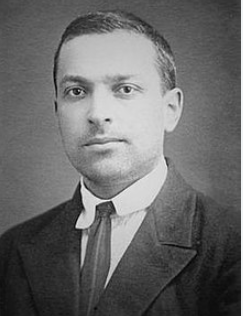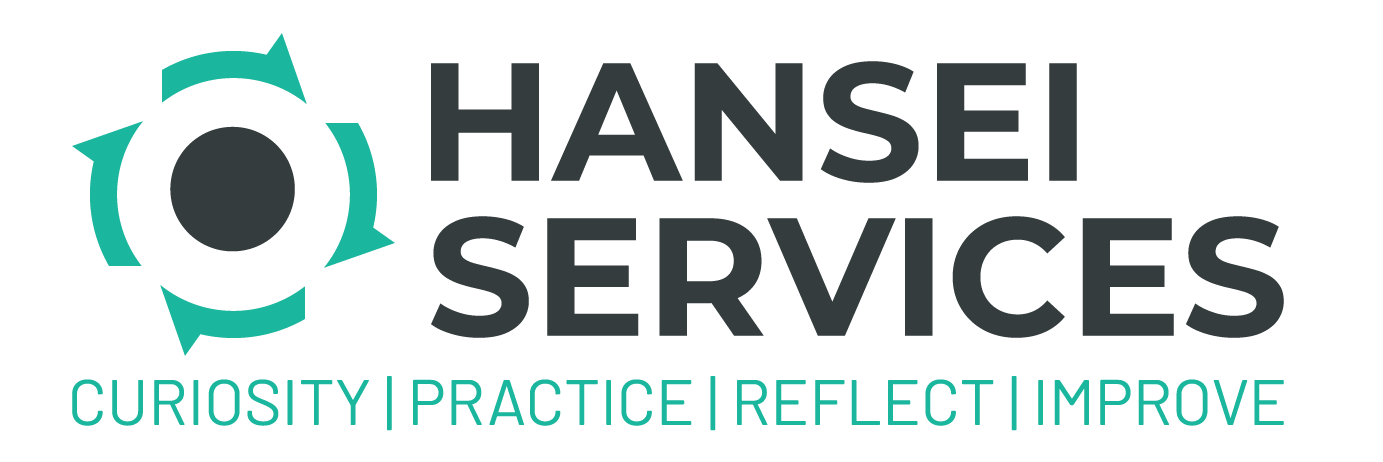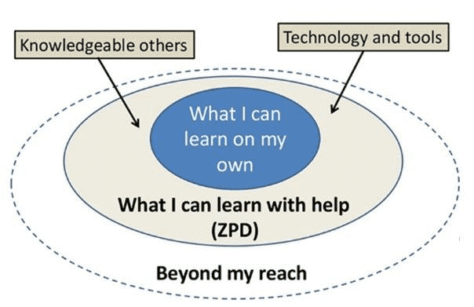To learn new ways of working, especially problem solving, there needs to be a system of learning and coaching, and opportunities to practice with support. With support, problem solving can become a habit and become part of the culture of organisations that intentionally embed it.
One of the great educational and training theories that can help to build a problem solving training approach on is Lev Vygotsky’s zone of proximal development ZPD) as seen in the article image above. In many cases, the western metaphorical equivalent of the ZPD
i.e. scaffolding) has been over emphasised as basic teacher support for a student.
An important discov ery in Vygotsky’s elaboration from the point of view of education in the modern world is that there can be multiple sources of support for learners of any skill in the ZPD
If we include other people’s models or other situations to our learning concept, there will be the possibility of multiple and even contradictory supporters in individual and collective zones of proximal development.
People can learn in 2 ways (by individual activity or social guidance) A central indicator of the first aspect is the gap between current state and future state skill level, not the number of problem solving sessions solved alone or together. The second aspect emphasizes the quality of interaction between the learner and the coach. Another factor isThe third aspect is to do with the present and future changes in the learner.

Applying ZPD to manufacturing problem-solving means designing training that is challenging but achievable, scaffolded by experts, and team-based with reflection built in. Operators and engineers gradually move from dependent guidance to independent problem-solving, embedding a culture of continuous improvement and capability development across the organization.
1. Learning is most effective just beyond current capability
The Zone of Proximal Development suggests that people learn best when tasks are slightly beyond what they can do independently but achievable with guidance. In manufacturing problem-solving:
Operators and team leads can tackle incrementally harder problems with the support of a coach, mentor, or facilitator.
Structured guidance — such as step-by-step problem-solving frameworks (PDCA, 5 Whys, A3) — allows them to stretch their skills without feeling overwhelmed.
Training should be designed so participants actively solve real problems, not just theoretical exercises, keeping tasks within their “proximal zone.”
2. Scaffolding accelerates capability building
ZPD emphasizes the role of scaffolding, where expert guidance is gradually reduced as the learner gains mastery. Applied to manufacturing:
Trainers can guide operators through initial problem-solving cycles, providing prompts, hints, or examples.
Over time, the scaffold is removed, enabling operators to identify root causes, propose solutions, and implement improvements independently.
This ensures that skills are embedded in practice, rather than just theoretical knowledge.
3. Peer and team interaction enhances learning
Play and collaboration in ZPD highlight social learning. In manufacturing:
Cross-functional problem-solving teams allow operators, engineers, and supervisors to learn from each other’s experience.
Facilitated workshops, reflection sessions, or rapid problem-solving boards provide opportunities for guided dialogue, letting less experienced members solve problems beyond their solo capacity.
This approach fosters a culture of continuous improvement, as knowledge is shared and reinforced.
4. Continuous feedback and reflection are essential
ZPD relies on feedback and reflection to consolidate learning. For manufacturing:
After each problem-solving cycle, teams should reflect on what worked, what didn’t, and why, tying directly to the Hansei principle of reflection.
Trainers and supervisors can provide targeted feedback to help learners internalize lessons and apply them to future challenges.
This ensures sustainable improvement, rather than one-off fixes.





